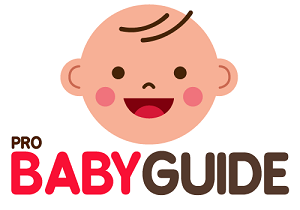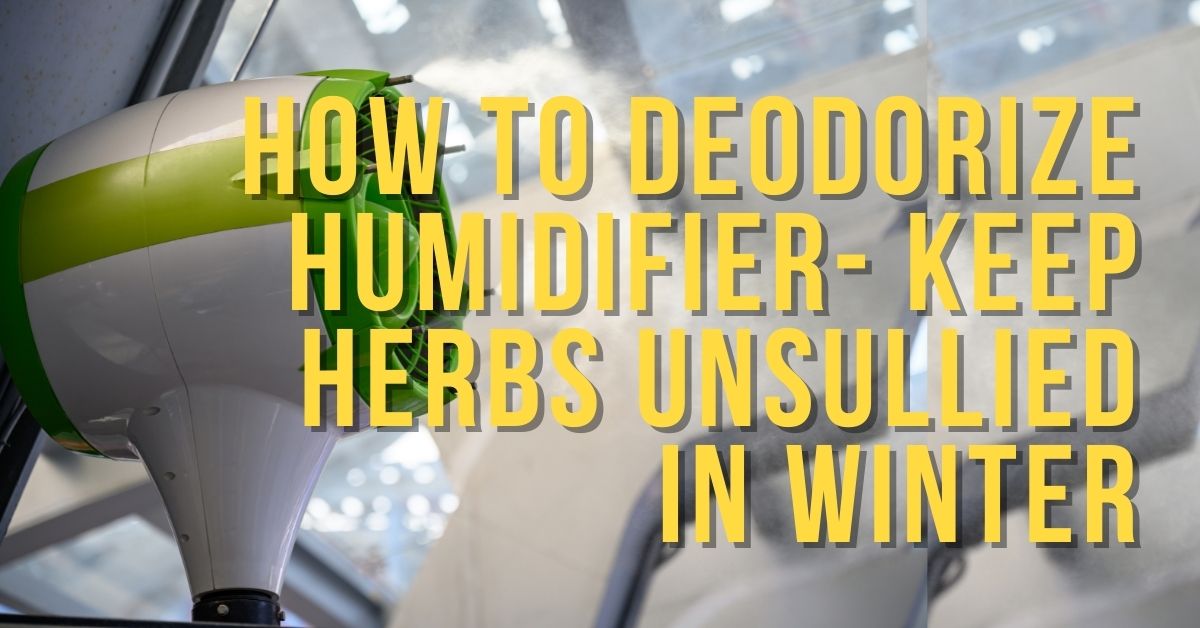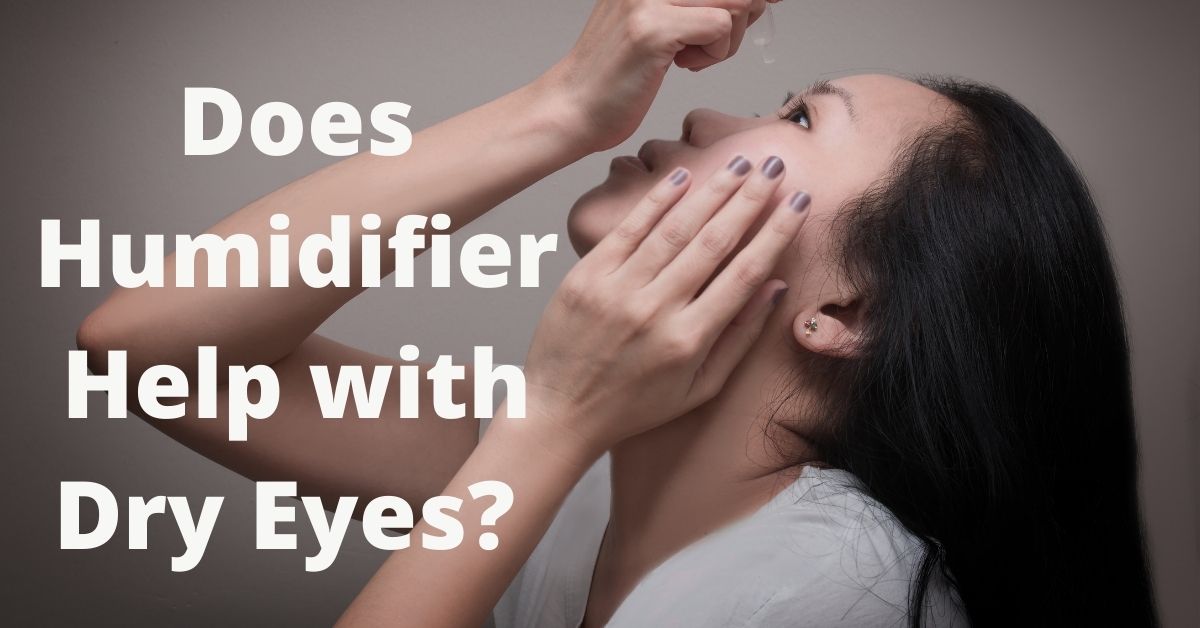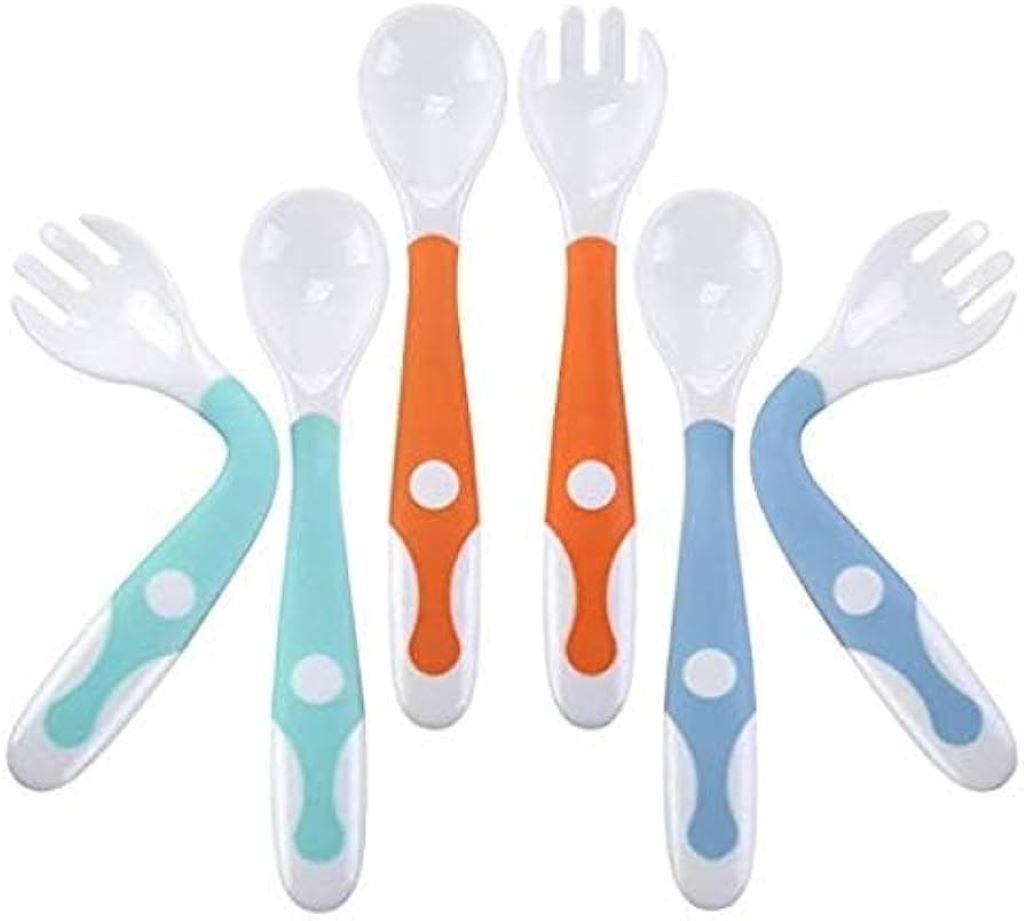Introduction
As a parent, the well-being of your child is paramount. From the food they eat to the clothes they wear, every choice is made with their health and safety in mind. This extends to the toys they play with, which, surprisingly, can harbor hidden dangers in the form of toxic chemicals and unsafe designs. Babies, in particular, explore the world with their mouths, making the materials and finishes of their toys critical. Navigating the vast market of baby toys can be overwhelming, with countless options and often confusing labels. Choosing safe and non-toxic baby toys is an essential part of this process. This comprehensive guide aims to empower parents with the knowledge and tools needed to confidently select safe, non-toxic, and enriching toys for their little ones, ensuring playtime is a source of joy and development, not a hidden health concern.
Keystones of Choosing Safe and Non-Toxic Baby Toys
The journey to a truly safe toy box rests on several fundamental pillars. Understanding these keystones will provide a robust framework for your purchasing decisions.
1. Understanding and Identifying Toxic Chemicals in Baby Toys
Many conventional toys, particularly those made from certain plastics, can contain a cocktail of harmful chemicals that pose serious health risks to developing babies. Awareness of these substances is the first step towards avoiding them.
Phthalates:
Often used to make plastics softer and more flexible, phthalates are endocrine disruptors that have been linked to reproductive issues, developmental problems, and even certain cancers. They are commonly found in PVC (polyvinyl chloride) plastics, often identified by recycling code #3, and are prevalent in bath toys, dolls, and squeezy toys. Always look for “phthalate-free” labels.
Bisphenol A (BPA) and Bisphenol S (BPS):
These chemicals are often found in hard plastics (polycarbonate, identified by recycling code #7) and can leach into a baby’s mouth, especially when chewed or heated. BPA has been linked to hormonal disruptions, behavioral issues, and metabolic disorders. While BPA has been banned in many baby bottles, BPS is often used as a replacement and carries similar concerns. Seek out “BPA-free” and ideally “BPS-free” products.
Lead:
While banned in paint and children’s products in many regions, lead can still be found in older toys, imported items, or even in some cheap metals and dyes. Lead poisoning can cause severe developmental delays, learning disabilities, and damage to the nervous system. Avoid toys made of cheap, heavy metals or those with chipped paint.
Flame Retardants:
These chemicals are added to various materials, including polyurethane foam often found in stuffed toys, to meet flammability standards. However, many flame retardants are neurotoxins and endocrine disruptors, posing risks to neurological development and hormonal balance. Opt for natural fillings like organic cotton, wool, or kapok.
Volatile Organic Compounds (VOCs):
Found in paints, glues, and some plastics, VOCs can off-gas into the air, contributing to indoor air pollution and potentially causing respiratory irritation, headaches, and other health issues. Look for low-VOC or VOC-free paints and finishes, particularly on wooden toys.
Formaldehyde:
This chemical is a known carcinogen and irritant, sometimes used in glues and finishes for composite wood products. Choose solid wood or toys certified to be formaldehyde-free or low in formaldehyde.
Heavy Metals (Cadmium, Mercury, Arsenic, Barium, Chromium, Selenium, Antimony):
These can be present in pigments and dyes used in toys. Reputable manufacturers will ensure their products meet strict standards for heavy metal content.
2. Prioritizing Safe Materials and Construction
Beyond avoiding harmful chemicals, the choice of materials themselves plays a pivotal role in toy safety.
- Natural Wood: Untreated, solid wood is an excellent choice. It’s durable, renewable, and naturally appealing to the senses. Ensure the wood is sustainably sourced (e.g., FSC certified) and that any paints or finishes are non-toxic, water-based, and lead-free. Avoid composite wood products that may contain formaldehyde.
- Organic Cotton and Natural Fibers: For soft toys, blankets, and fabric elements, organic cotton, wool, hemp, or linen are superior choices. They are free from pesticides and harmful dyes. Look for certifications like GOTS (Global Organic Textile Standard) to ensure the entire production chain meets organic and ethical standards.
- Food-Grade Silicone: This soft, flexible, and durable material is an excellent alternative to plastic for teethers, bath toys, and certain sensory toys. Food-grade silicone is free from BPA, phthalates, and PVC.
- Natural Rubber: Derived from rubber trees, natural rubber is biodegradable, sustainable, and free from harmful chemicals. It’s ideal for teethers and bath toys, providing a safe and satisfying chew.
- Recycled Plastics (with caution): While striving for plastic-free options is ideal, if you choose plastic toys, opt for those made from recycled plastics like HDPE (High-Density Polyethylene, recycling code #2) and polypropylene (PP, recycling code #5), as these are generally considered safer than PVC or polycarbonate. Look for brands that explicitly state their use of post-consumer recycled materials and their commitment to non-toxic production.
- Safe Finishes: If a wooden toy is painted or sealed, verify that the finishes are water-based, non-toxic, and free of lead. Beeswax or food-grade oils (like flaxseed or jojoba oil) are excellent natural alternatives for sealing wood.
3. Adhering to Age-Appropriate Design and Safety Standards
Beyond material composition, the physical design of a toy is crucial for preventing injuries.
- Choking Hazards: For infants and toddlers (generally under three years old), avoid toys with small parts that can detach or fit entirely into a child’s mouth. A good rule of thumb is the “toilet paper roll test” – if a toy or part can fit inside an empty toilet paper roll, it’s a choking hazard for young children. This includes small buttons, eyes, wheels, and loose components.
- Sharp Edges and Points: Toys should have smooth, rounded edges to prevent cuts and scrapes. Avoid thin or brittle plastics that can break easily, creating sharp shards.
- Strings, Cords, and Ribbons: Any strings or cords on toys should be no longer than 7-12 inches to prevent strangulation, especially in cribs or playpens. Remove crib gyms when a baby can push up on hands and knees.
- Loud Noises: Toys that produce excessively loud or shrill noises can damage a child’s developing hearing. Test noise levels before purchasing.
- Magnets: Toys with small, powerful magnets pose a significant danger if swallowed, as they can cause serious internal injuries. Avoid these for young children.
- Batteries: If a toy uses batteries, ensure the battery compartment is securely fastened with screws to prevent children from accessing them. Button batteries, in particular, are extremely hazardous if ingested.
- Reputable Certifications: Look for toys that meet established safety standards. In the U.S., the Consumer Product Safety Commission (CPSC) sets stringent guidelines. Labels like “ASTM F963” or “Meets CPSC Safety Requirements” indicate compliance. Additional certifications like JPMA (Juvenile Products Manufacturers Association) Certified also provide assurance. For textiles, GOTS is a strong indicator of non-toxic and organic materials. For wood, FSC (Forest Stewardship Council) ensures sustainable forestry practices.
4. Benefits of Natural vs. Synthetic Baby Toys
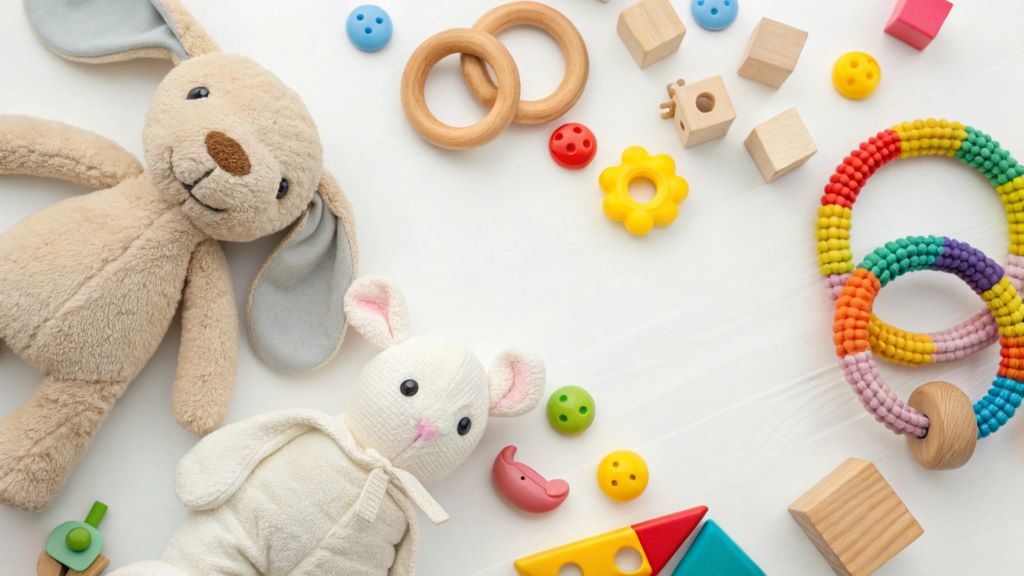
The shift towards natural materials in toys isn’t just a trend; it’s rooted in tangible benefits for both children and the planet.
- Safety: As discussed, natural materials are inherently less likely to contain harmful chemicals compared to many synthetic plastics.
- Durability and Longevity: High-quality wooden toys, for instance, are often heirloom pieces that can withstand years of play and be passed down through generations, reducing waste.
- Sensory Experience: Natural materials offer a richer sensory experience. The varied textures of wood, the warmth of wool, and the subtle scents of natural finishes engage a child’s senses in ways that smooth, uniform plastic cannot. This sensory input is crucial for cognitive development.
- Environmental Impact: Natural materials are typically biodegradable and sourced from renewable resources, minimizing their environmental footprint compared to petroleum-based plastics that contribute to pollution and landfill waste.
- Aesthetic Appeal: Natural toys often possess a timeless, minimalist aesthetic that can seamlessly integrate into a home environment, fostering a sense of calm and beauty.
While natural toys may sometimes come with a higher upfront cost, their durability and long-term benefits often outweigh this. However, it’s important to note that not all natural toys are created equal; always check for non-toxic finishes and ethical sourcing.
5. Eco-Friendly and Sustainable Baby Toy Options
Beyond just non-toxicity, sustainability is a growing concern for environmentally conscious parents.
- Certified Sustainable Wood: Look for FSC-certified wood, which ensures responsible forest management.
- Recycled and Upcycled Materials: Some innovative brands create toys from recycled milk jugs, plastic bottles, or other repurposed materials, diverting waste from landfills.
- Bamboo: A rapidly renewable resource, bamboo is lightweight, strong, and biodegradable, making it an excellent sustainable material for toys.
- Natural Rubber: As mentioned, it’s a sustainable and biodegradable choice.
- Organic Cotton and Wool: Choosing organic options for fabric toys supports environmentally friendly farming practices.
- Heirloom Quality: Investing in durable, high-quality toys that can be passed down or repurposed reduces the overall consumption and waste.
- DIY and Repurposing Household Items: The most eco-friendly option is often found within your home. Simple household items can be transformed into engaging and safe toys:
- Pots and Pans with Wooden Spoons: Excellent for exploring sounds and rhythm.
- Fabric Scraps: Different textures and colors for sensory exploration.
- Cardboard Boxes: Limitless possibilities for imaginative play (cars, houses, rockets).
- Measuring Cups and Spoons: Great for scooping and pouring in a sensory bin with rice or beans (under supervision).
- Empty Water Bottles (securely sealed): Fill with rice, beans, or colorful beads for shakers and visual stimulation.
- Laundry Baskets: Can become boats, cars, or cozy nooks.
- Safe Kitchen Utensils: Large wooden spoons, whisks, and silicone spatulas can be fascinating for babies to explore.
6. Reputable Non-Toxic Baby Toy Brands
While not an exhaustive list, several brands have established a strong reputation for their commitment to safety, non-toxic materials, and sustainable practices. Always verify current certifications and material descriptions before purchasing, as product lines can evolve.
- PlanToys: Known for their sustainable rubberwood toys, innovative designs, and non-toxic finishes.
- Green Toys: Specializes in toys made from 100% recycled plastic milk jugs, free of BPA, phthalates, and PVC.
- HABA: Offers a wide range of high-quality wooden toys made from PEFC-certified beechwood or maple with non-toxic, water-based stains.
- Lovevery: Creates developmentally appropriate play kits using sustainably sourced wood, organic cotton, and non-toxic paints.
- Grimm’s Spiel und Holz Design: Handcrafted wooden toys from sustainably sourced wood, painted with non-toxic, water-based colors.
- Tender Leaf Toys: Beautiful wooden toys made from sustainably sourced rubberwood with non-toxic finishes.
- Hevea: Specializes in natural rubber teethers and bath toys, free from PVC, BPA, and phthalates.
- Under the Nile: Focuses on organic cotton plush toys and clothing, using 100% organic Egyptian cotton and eco-friendly dyes.
- Fagus: German brand renowned for durable, non-toxic wooden vehicles made from German beech wood.
7. Maintaining and Cleaning Non-Toxic Baby Toys
Even the safest toys need regular cleaning to prevent the buildup of germs and dirt. The cleaning method depends on the material.
- Wooden Toys: Wipe down with a damp cloth and mild soap or a diluted vinegar solution (1:1 water to white vinegar). Immediately dry with a clean, dry cloth to prevent warping or damage. Avoid soaking.
- Silicone and Hard Plastic Toys (without batteries/electronics): Can be washed with warm, soapy water, placed in the dishwasher (check for “dishwasher safe” labels), or even boiled for sterilization (ensure the material can withstand high heat). A diluted vinegar solution can also be used.
- Fabric and Plush Toys: Check labels for washing instructions. Many can be machine washed on a gentle cycle with a mild, non-toxic detergent. Air dry thoroughly or tumble dry on low. For spot cleaning, use a mild soap and water solution.
- Natural Rubber Toys: Wash with warm, soapy water and air dry. Avoid harsh chemicals or excessive heat, which can degrade the natural rubber.
- Electronic Toys: Wipe down with a damp cloth and mild soap or a diluted vinegar solution. Ensure no moisture gets into battery compartments or electronic components. Always remove batteries before cleaning.
Regularly inspect all toys for signs of wear and tear, splinters, cracks, or loose parts. Repair or discard damaged toys immediately.
Read More: Montessori Toys: A World of Learning for 1 to 3-Year-Olds
Conclusion
Choosing safe and non-toxic baby toys is an ongoing commitment for parents. It requires informed decision-making, a keen eye for labels, and a willingness to prioritize health and environmental impact over convenience or fleeting trends. By understanding the common toxic chemicals, opting for natural and certified safe materials, adhering to age-appropriate design, and maintaining toys properly, you can create a playful environment that fosters your child’s growth and development without compromising their well-being. This investment in safe toys is an investment in your child’s healthy future, allowing them to explore, learn, and imagine in a truly secure and nurturing space.
Frequently Asked Questions (FAQs)
Q1: What are the absolute must-avoid chemicals in baby toys?
A1: The top chemicals to avoid are phthalates (especially in soft plastics), BPA/BPS (in hard plastics), lead (in paints/metals), and flame retardants (in foam fillings).
Q2: How can I tell if a plastic toy is safe?
A2: Look for labels like “BPA-free,” “phthalate-free,” and “PVC-free.” If possible, choose plastics with recycling codes #2 (HDPE) or #5 (PP), as these are generally considered safer. Even better, opt for natural alternatives like wood, silicone, or natural rubber.
Q3: Are wooden toys always safe?
A3: Not automatically. While natural wood is a great choice, ensure it’s solid wood (not composite, which can contain formaldehyde) and that any paints or finishes are non-toxic, water-based, and lead-free. Look for certifications like FSC.
Q4: What certifications should I look for on baby toys?
A4: ASTM F963 / Meets CPSC Safety Requirements (US): Indicates compliance with general toy safety standards.
- JPMA Certified: Additional safety testing by the Juvenile Products Manufacturers Association.
- GOTS (Global Organic Textile Standard): For organic cotton and other textiles, ensuring chemical-free and ethical production.
- FSC (Forest Stewardship Council): For sustainably sourced wood.
- OEKO-TEX Standard 100: Certifies that textiles are free from harmful substances.
Q5: My baby puts everything in their mouth. What materials are best for teething toys?
A5: Food-grade silicone and natural rubber are excellent choices for teethers. They are soft, durable, and free from harmful chemicals. Untreated, smooth wooden teethers are also a great option.
Q6: How often should I clean my baby’s toys?
A6: Toys that go into your baby’s mouth frequently (teethers, pacifiers) or bath toys should be cleaned daily. Other frequently used toys (hard plastics, wooden toys) can be cleaned weekly. Soft toys and plushies should be washed every couple of weeks, or more often if the child has been sick.
Q7: Can I use household items as safe baby toys?
A7: Absolutely! Many common household items can be excellent, safe, and stimulating toys. Examples include pots and pans, fabric scraps, cardboard boxes, measuring cups, and empty, securely sealed plastic bottles (filled with safe items like rice). Always ensure items are clean, free of sharp edges, small parts, or choking hazards, and supervise playtime.
Q8: What about secondhand toys? Are they safe?
A8: Exercise caution with secondhand toys. While some can be great finds, it’s harder to verify their material composition, whether they’ve been recalled, or if they contain older, banned chemicals like lead paint. If you do opt for secondhand, prioritize natural materials like solid, untreated wood, and thoroughly inspect and clean them.
Q9: Do “eco-friendly” or “natural” labels always mean a toy is non-toxic?
A9: Not necessarily. While these labels are a good starting point, always look deeper. “Natural” could mean the material is natural but might still have toxic finishes. “Eco-friendly” might refer to sustainable sourcing but not necessarily the absence of all harmful chemicals. Always check for specific non-toxic certifications and material disclosures.
Read More:
The Ultimate Guide to Baby Teething Toys: Soothing Solutions for Happy Babies
